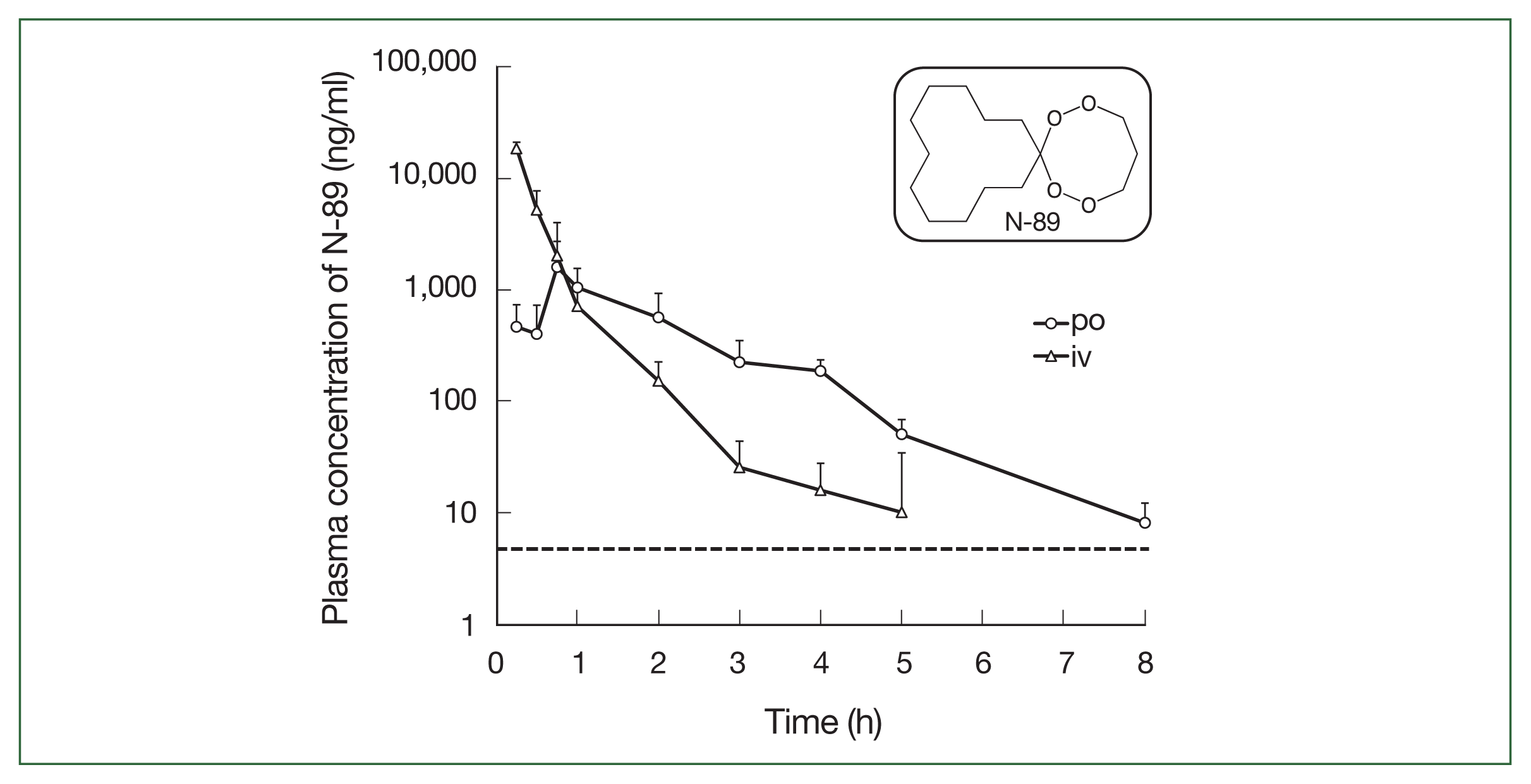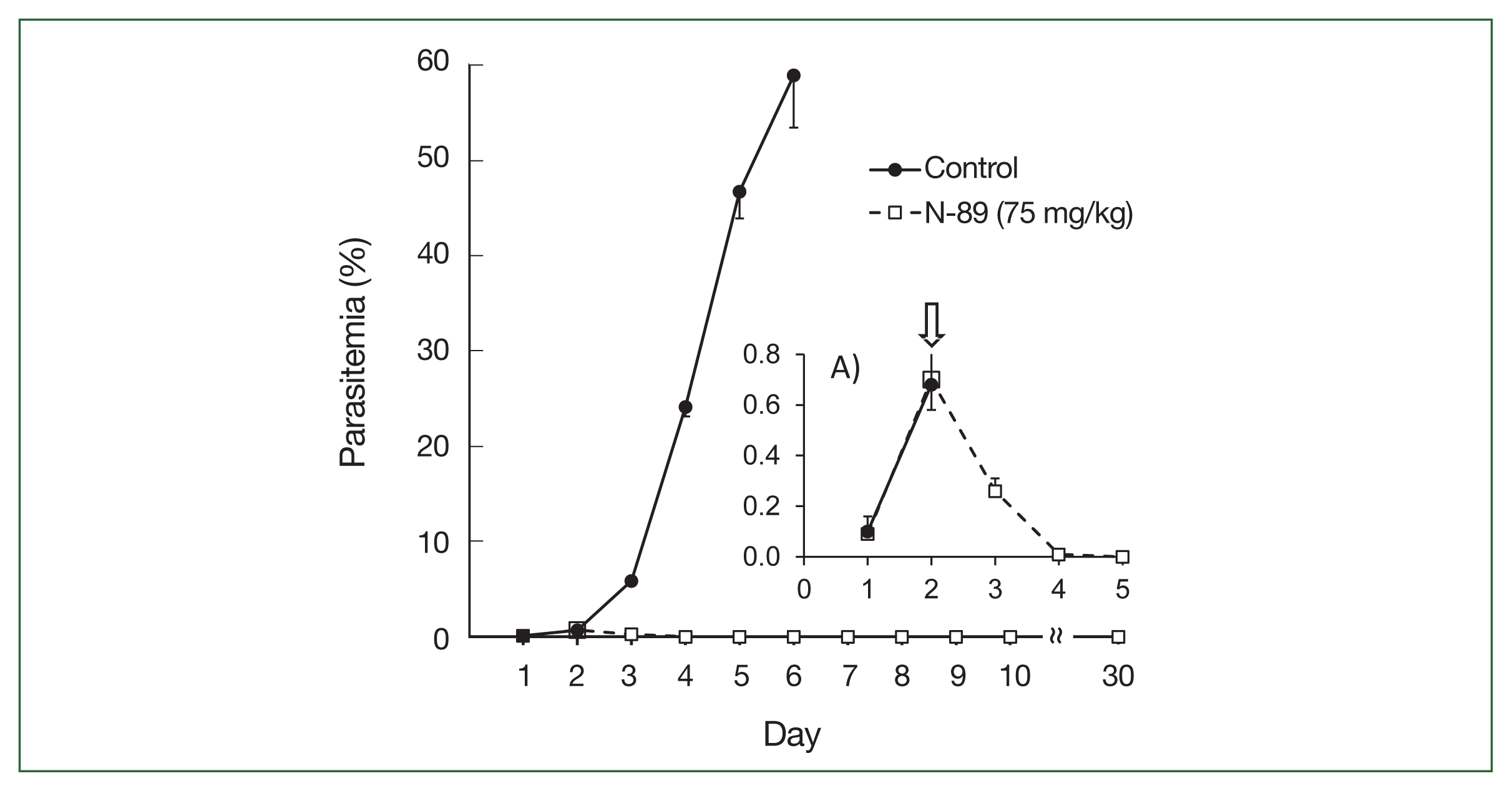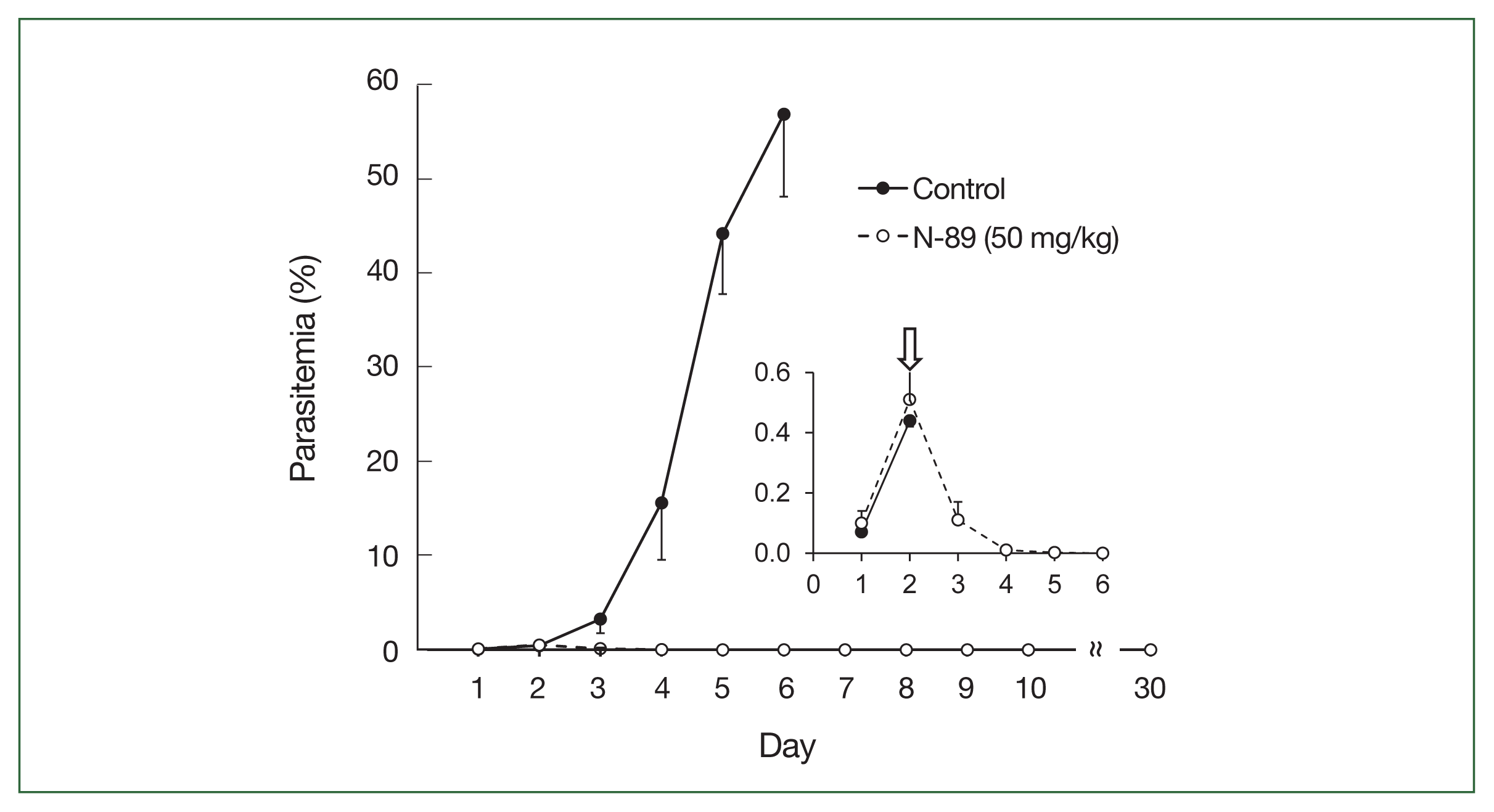3. van der Pluijm RW, Imwong M, Chau NH, Hoa NT, Thuy-Nhien NT, et al. Determinants of dihydroartemisinin-piperaquine treatment failure in
Plasmodium falciparum malaria in Cambodia, Thailand, and Vietnam: a prospective clinical, pharmacological, and genetic study.
Lancet Infect Dis 2019;19(9):952-961
https://doi.org/10.1016/S1473-3099(19)30391-3



4. Imwong M, Suwannasin K, Kunasol C, Sutawong K, Mayxay M, et al. The spread of artemisinin-resistant
Plasmodium falciparum in the Greater Mekong subregion: a molecular epidemiology observational study.
Lancet Infect Dis 2017;17(5):491-497
https://doi.org/10.1016/S1473-3099(17)30048-8



5. Dormoi J, Amalvict R, Gendrot M, Pradines B. Methylene blue-based combination therapy with amodiaquine prevents severe malaria in an experimental rodent model.
Pharma-ceutics 2022;14(10):2031
https://doi.org/10.3390/pharmaceutics14102031



6. Khairani S, Fauziah N, Wiraswati HL, Panigoro R, Setyowati EY, et al. Oral administration of piperine as curative and prophylaxis reduces parasitaemia in
Plasmodium berghei ANKA-infected mice.
J Trop Med 2022;2022:5721449
https://doi.org/10.1155/2022/5721449



7. Gebremariam GK, Desta HK, Teklehaimanot TT, Girmay TG.
In Vivo antimalarial activity of leaf latex of
Aloe melanacantha against
Plasmodium berghei infected mice.
J Trop Med 2021;2021:6690725
https://doi.org/10.1155/2021/6690725



8. Kim HS, Nagai Y, Ono K, Begum K, Wataya Y, et al. Synthesis and antimalarial activity of novel medium-sized 1,2,4,5-tetraoxacycloalkanes.
J Med Chem 2001;44:2357-2361
https://doi.org/10.1021/jm010026g


9. Aly NS, Hiramoto A, Sanai H, Hiraoka O, Hiramoto K, et al. Proteome analysis of new antimalarial endoperoxide against
Plasmodium falciparum
.
Parasitol Res 2007;100(5):1119-1124
https://doi.org/10.1007/s00436-007-0460-8


10. Morita M, Koyama T, Sanai H, Sato A, Hiramoto A, et al. Stage specific activity of synthetic antimalarial endoperoxides, N-89 and N-251, against
Plasmodium falciparum
.
Parasitol Int 2015;64(1):113-117
https://doi.org/10.1016/j.parint.2014.10.007


11. Sato A, Hiramoto A, Morita M, Matsumoto M, Komichi Y, et al. Antimalarial activity of endoperoxide compound 6-(1,2,6,7- tetraoxaspiro [7.11] nonadec-4-yl) hexan-1-ol.
Parasitol Int 2011;60(3):270-273
https://doi.org/10.1016/j.parint.2011.04.001


12. Aly NSM, Matsumori H, Dinh TQ, Sato A, Miyoshi SI, et al. Formulation and evaluation of the antimalarial N-89 as a transdermal drug candidate.
Parasitol Int 2023;93:102720
https://doi.org/10.1016/j.parint.2022.102720


13. Aly NSM, Matsumori H, Dinh TQ, Sato A, Miyoshi SI, et al. Pioneer use of antimalarial transdermal combination therapy in rodent malaria model.
Pathogens 2023;12(3):398
https://doi.org/10.3390/pathogens12030398



14. Aly NSM, Matsumori H, Dinh TQ, Sato K, Miyoshi SI, et al. Antimalarial effect of synthetic endoperoxide on
Plasmodium chabaudi infected mice.
Parasites Hosts Dis 2023;61(1):33-41
https://doi.org/10.3347/PHD.22119



15. Imada C, Takahashi T, Kuramoto M, Masuda K, Ogawara K, et al. Improvement of oral bioavailability of N-251, a novel antimalarial drug, by increasing lymphatic transport with long-chain fatty acid-based self-nanoemulsifying drug delivery system.
Pharm Res 2015;32(8):2595-2608
https://doi.org/10.1007/s11095-015-1646-x


17. Sato A, Kawai S, Hiramoto A, Morita M, Tanigawa N, et al. Antimalarial activity of 6-(1,2,6,7-tetraoxaspiro[7.11]nonadec- 4-yl)hexan-1-ol (N-251) and its carboxylic acid de-rivatives.
Parasitol Int 2011;60(4):488-492
https://doi.org/10.1016/j.parint.2011.08.017


18. Morita M, Sanai H, Hiramoto A, Sato A, Hiraoka O, et al.
Plasmodium falciparum endoplasmic reticulum-resident calcium binding protein is a possible target of synthetic antima-larial endoperoxides, N 89 and N 251.
J Proteome Res 2012;11(12):5704-5711
https://doi.org/10.1021/pr3005315


19. La Greeca N, Hibbs AR, Riffkin C, Foley M, Tilley L. Identification of an endoplasmic reticulum-resident calcium-binding protein with multiple EF-hand motifs in asexual stage of
Plasmodium falciparum
.
Mol Biochem Parasitol 1997;89(2):283-293
https://doi.org/10.1016/s0166-6851(97)00134-5


20. Fierro MA, Asady B, Brooks CF, Cobb DW, Villegas A, et al. An endoplasmic reticulum CREC family protein regulates the egress proteolytic cascade in malaria parasites.
mBio 2020;11(1):e03078-03019
https://doi.org/10.1128/mBio.03078-19



21. Gabriela M, Matthews KM, Boshoven C, Kouskousis B, Jonsdottir TK, et al. A revised mechanism for how
Plasmodium falciparum recruits and exports proteins into its erythrocytic host cell.
PLoS Pathog 2022;18(2):e1009977
https://doi.org/10.1371/journal.Ppat.1009977



23. Hashimoto M, Taguchi K, Imoto S, Yamasaki K, Mitsuya H, et al. Pharmacokinetic properties of orally Administered 4′-cyano-2′-deoxyguanosine, a novel nucleoside analog inhibitor of the Hepatitis B, in viral liver injury model rats.
Biol Pharm Bull 2020;43(9):1426-1429
https://doi.org/10.1248/bpb.b20-00372



24. Peters W. The chemotherapy of rodent malaria, XXII. The value of drug-resistant strains of
P. berghei in screening for blood schizontocidal activity.
Ann Trop Med Parasitol 1975;69(2):155-171.

26. Fu C, Shi H, Chen H, Zhang K, Wang M, et al. Oral bioavailability comparison of artemisinin, deoxyartemisinin, and 10- deoxoartemisinin based on computer simulations and pharmacokinetics in rats.
ACS Omega 2021;6(1):889-899
https://doi.org/10.1021/acsomega.0c05465



27. Klayman DL, Ager AL, Fleckenstein L, Lin AJ. Transdermal artelinic acid: an effective treatment for
Plasmodium berghei-infected mice.
Am J Trop Med Hyg 1991;45(5):602-607
https://doi.org/10.4269/ajtmh.1991.45.602






